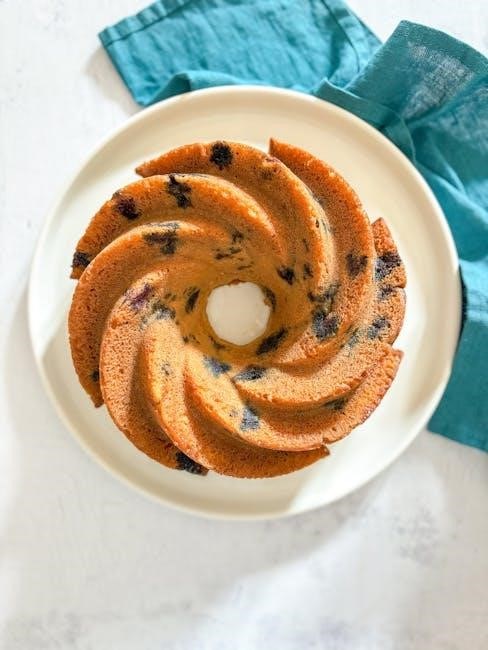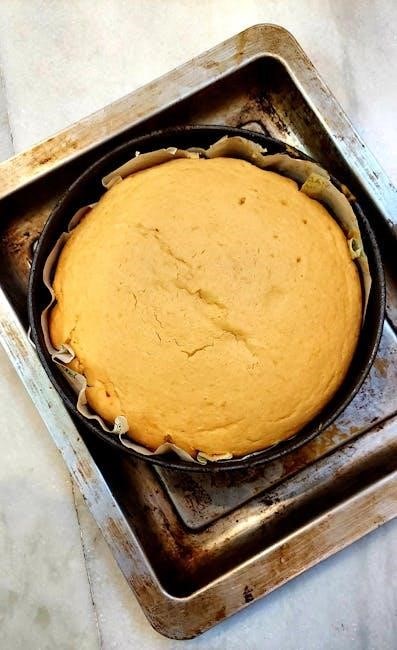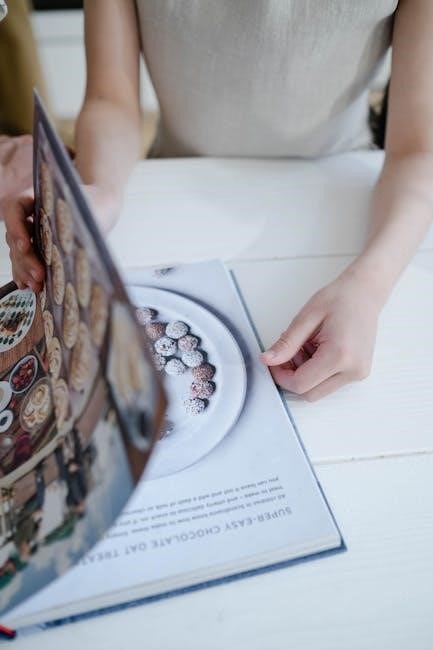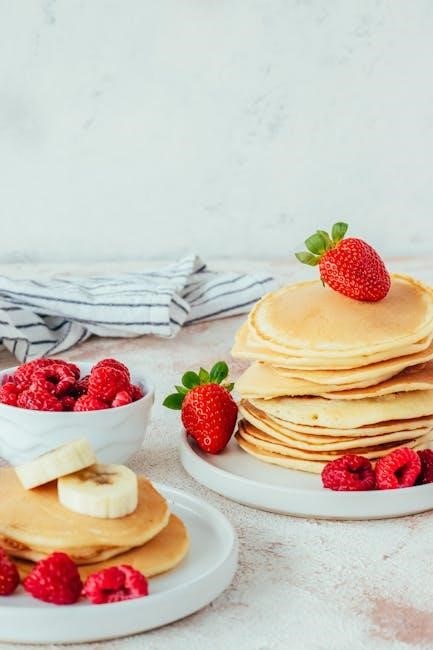Wilton cake pans are renowned for helping bakers create stunning and unique cakes for any occasion. This comprehensive guide explores the world of Wilton cake pans. It will help you learn how to prepare them correctly for baking success.
Preparing Your Wilton Cake Pan
Properly preparing your Wilton cake pan is crucial for ensuring your cake releases easily and bakes evenly. This section will cover essential methods‚ like greasing‚ flouring‚ using Wilton Cake Release‚ and the technique of lining pans with parchment paper.
Greasing and Flouring Methods
Greasing and flouring is a traditional technique that ensures your cake releases cleanly. Start by applying a thin‚ even layer of shortening‚ butter‚ or cooking oil to the entire interior surface of your Wilton cake pan. Use a pastry brush or paper towel to reach every corner and crevice.
Once greased‚ add a tablespoon or two of all-purpose flour to the pan. Tilt and rotate the pan‚ tapping gently to distribute the flour evenly across the greased surface. Make sure the flour coats every area. Invert the pan and tap out any excess flour to prevent a thick‚ unwanted layer on your cake.
For chocolate cakes‚ consider using cocoa powder instead of flour to avoid a white residue. For intricate cake pans‚ ensure the grease and flour reach every detail. This will help maintain the design when the cake is released. This classic method is effective for most cake recipes.
Using Wilton Cake Release
Wilton Cake Release offers a convenient alternative to traditional greasing and flouring. This premixed solution combines the benefits of both methods‚ ensuring cakes release effortlessly with a clean finish.
Before each use‚ stir the Cake Release well to ensure a consistent mixture. Apply a thin‚ even layer of the Cake Release to the entire inside surface of your Wilton cake pan using a pastry brush. Make sure to coat all corners and intricate details. A little goes a long way‚ so avoid applying too much‚ which can create a greasy residue.
Cake Release works effectively on various pan materials‚ including aluminum‚ silicone‚ and non-stick surfaces. It is particularly useful for detailed or shaped pans. After baking‚ the cake should release easily‚ leaving minimal crumbs and preserving the cake’s shape. Clean the pan as usual after use. Cake Release is a reliable option for achieving perfect cake release every time.
Lining the Pan with Parchment Paper
Lining your Wilton cake pan with parchment paper provides an excellent way to prevent sticking and ensure easy cake removal. This method is particularly useful for delicate cakes or those prone to sticking. Start by placing the pan on a sheet of parchment paper. Trace the bottom of the pan. Cut out the circle just inside the traced line.
For the sides‚ cut strips of parchment paper tall enough to extend slightly above the rim of the pan. Grease the inside of the pan lightly with butter or cooking spray. Press the parchment circle into the bottom of the pan. Then‚ adhere the parchment strips to the sides‚ overlapping them slightly if needed.
Ensure the parchment fits snugly against the pan. This prevents batter from seeping underneath. After baking‚ allow the cake to cool slightly before inverting it onto a cooling rack. The parchment paper will peel away easily‚ leaving a clean cake ready for decorating.

General Baking Instructions for Wilton Pans
When using Wilton cake pans‚ preheat the oven to 350°F or the temperature specified in your recipe. Always prepare your pan with grease and flour or cake release for best results.
Oven Temperature and Baking Time
Achieving baking perfection with Wilton cake pans relies heavily on maintaining the correct oven temperature and adhering to appropriate baking times. Generally‚ a temperature of 350°F (175°C) is recommended for most cake recipes‚ but it’s always crucial to consult your specific recipe for precise instructions.
Baking times will vary depending on the size and shape of your Wilton pan‚ as well as the density of the cake batter. Start by checking for doneness around the minimum baking time suggested in your recipe. For novelty and character pans‚ ensure even heat distribution to prevent uneven baking.
Remember‚ ovens can vary‚ so using an oven thermometer can help ensure accurate temperature readings. Keep a close eye on your cake as it bakes‚ and adjust the baking time accordingly to avoid over- or under-baking.
Checking for Doneness
Determining when your cake is perfectly baked in a Wilton pan involves more than just glancing at it. The most reliable method is the toothpick test: gently insert a toothpick into the center of the cake. If it comes out clean‚ or with just a few moist crumbs attached‚ your cake is done.
Another indicator is the cake’s appearance. It should be lightly golden brown and the edges should be pulling away slightly from the sides of the pan. A gentle press on the top of the cake should cause it to spring back lightly.
If the toothpick comes out with wet batter‚ continue baking and check again every few minutes. Remember that opening the oven frequently can lower the temperature‚ so try to be quick when checking for doneness. Trust your instincts and use these methods for perfectly baked results.
Cooling the Cake
Proper cooling is critical for preventing your cake from sticking or breaking when you remove it from the Wilton pan; After removing the baked cake from the oven‚ let it cool in the pan for about 10 to 15 minutes. This allows the cake to firm up slightly‚ making it easier to handle.
After the initial cooling period‚ invert the cake onto a wire rack. If the cake doesn’t release immediately‚ gently tap the bottom of the pan or run a thin knife around the edges to loosen it. Ensure the wire rack is clean to prevent sticking.
Allow the cake to cool completely on the rack before frosting or decorating. This prevents the frosting from melting and ensures a stable base for your decorations. Cooling ensures a moist and structurally sound cake.

Specific Pan Types and Instructions
Wilton offers a wide array of cake pans‚ each designed for specific shapes and sizes. Understanding the unique instructions for each pan type ensures optimal baking results and helps prevent common mistakes.
Character and Novelty Cake Pans
Wilton’s character and novelty cake pans allow you to bake cakes in fun and unique shapes‚ from animals to cartoon characters. These pans often come with specific instructions that are crucial for achieving a well-defined design. Generally‚ a firmer textured cake batter‚ like pound cake‚ is recommended for these pans to hold the shape effectively during baking.
Before baking‚ it’s essential to grease and flour the pan thoroughly‚ paying close attention to intricate details. Some bakers find that using Wilton Cake Release provides superior results. Fill the pan carefully‚ avoiding overfilling‚ and bake according to the recipe or pan instructions‚ usually at 350°F (175°C).
Cool the cake in the pan for a specified time before inverting it onto a wire rack to cool completely. Decorating these cakes involves creativity and precision‚ often using Wilton decorating bags and tips to bring the character to life with icing and colors.
Layer Cake Pans
Wilton layer cake pans are essential for creating tiered cakes for birthdays‚ weddings‚ and other special events. These pans are typically round or square and come in various sizes to create different cake dimensions. Proper preparation is crucial for even baking and easy release. Always grease and flour the pan or use Wilton Cake Release. Parchment paper lining is a great way to ensure the cake does not stick.
When filling the pan‚ distribute the batter evenly and avoid overfilling to prevent overflow and uneven baking. Use bake-even strips for level cakes with no domes. Bake according to your recipe‚ checking for doneness with a toothpick. Cool the cakes in the pans for about 10 minutes before inverting them onto a wire rack to cool completely. Leveling the cake layers ensures a stable and visually appealing tiered cake.
Letters and Numbers Cake Pan
The Wilton Letters and Numbers Cake Pan offers a fun‚ versatile way to personalize cakes for birthdays‚ anniversaries‚ or graduations. This pan typically comes with a grid-style base and removable inserts that allow you to create all 26 letters of the alphabet and numbers 0 through 9.
To use the pan‚ arrange the inserts according to the desired letter or number. Grease and flour the pan well‚ paying attention to the corners and edges around the inserts. Fill the pan with cake batter‚ being careful not to overfill. Bake according to your recipe‚ and let the cake cool completely before removing the inserts. Decorate with icing‚ sprinkles‚ or other embellishments to make your personalized cake unique and memorable. The included instructions are helpful for creating different characters.

Wilton Bake Even Strips
Wilton Bake Even Strips are a baker’s secret weapon for achieving perfectly level cakes; These strips are designed to insulate the sides of your cake pan‚ ensuring that the batter cooks evenly from edge to center. This prevents the formation of domes‚ cracks‚ and crusty edges‚ resulting in a moist‚ uniformly baked cake.
To use Wilton Bake Even Strips‚ soak them in cold water‚ wring out the excess‚ and wrap them around the outside of your cake pan. Secure the strips tightly with the attached fasteners. Bake your cake as usual‚ and you’ll notice a significant difference in the evenness of the bake. These strips are reusable and suitable for various pan sizes‚ making them a must-have for any serious baker seeking professional-quality results.

Cleaning and Caring for Wilton Cake Pans
Proper cleaning and care are essential to extend the life of your Wilton cake pans. After each use‚ hand wash the pan in warm‚ soapy water using a non-abrasive sponge or cloth. Avoid using steel wool or harsh scouring pads‚ as these can scratch the surface and damage the non-stick coating.
For stubborn residue‚ soak the pan in warm‚ soapy water for a few minutes before washing. Ensure the pan is completely dry before storing it. To prevent scratches‚ store the pan in a safe place where it won’t come into contact with other metal objects. With proper care‚ your Wilton cake pans will continue to deliver exceptional baking results for years to come. Avoid dishwashers‚ as they can damage the finish.
